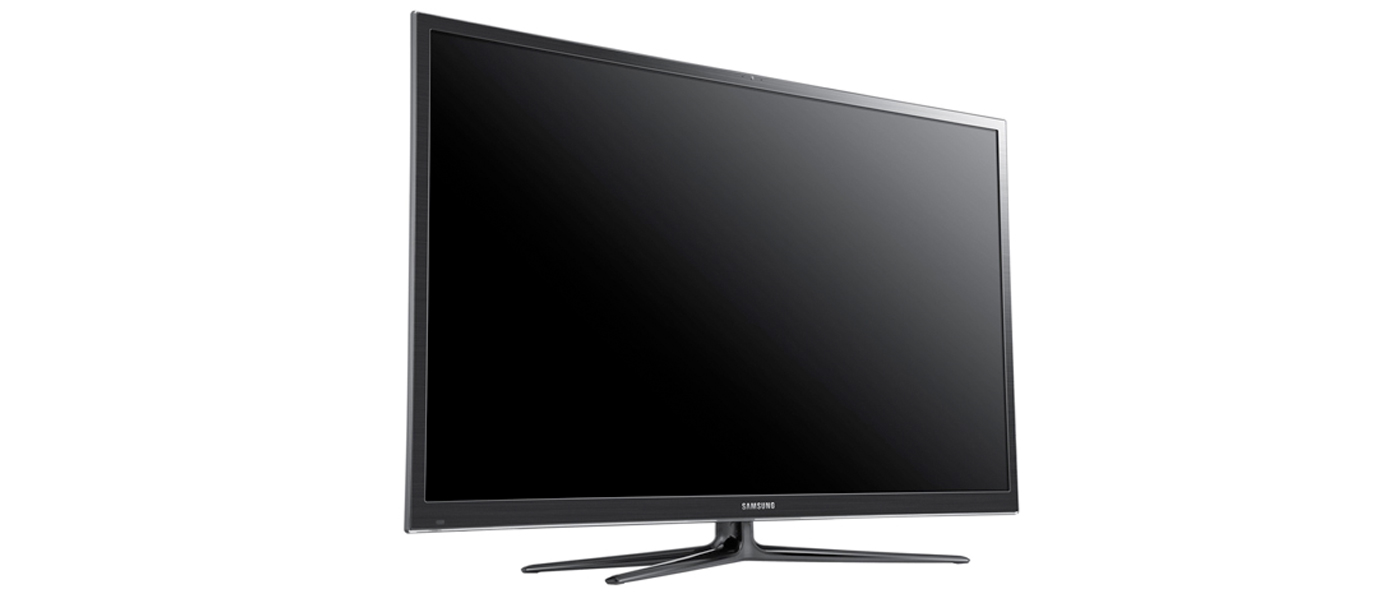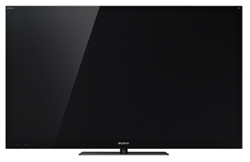
Introduction to the Sony 46HX929 46″ Backlit LED-Array HDTV
All LED LCD TVs are not designed the same. Manufacturers have two approaches they can take with an LED design: An edge-lit design that is thin and functions like a conventional CCFL backlight, or a backlit LED-array that isn’t as thin, but allows for precise control over lighting individual areas of the screen. Using a full array of LEDs allows for LCDs to finally produce deep, rich blacks that plasma and other technologies have always beaten them on. Black areas of an image can achieve true black by turning the LEDs off.
The Sony HX929 line is an LED-backlit design, and sits at the top of their LCD line. With a full array of Internet Applications, as well as the best picture quality Sony can put in a TV set today, it is their statement LCD unit. Have they managed to produce a unit that can rival other technologies for black levels and eliminate the side effects we’ve seen in other LCD units?
SONY 46HX929 46″ BACKLIT LED HDTV SPECIFICATIONS
- Design: Backlit LED-array LCD HDTV
- Screen Size (Diagonal): 46″
- Native Resolution: 1080p
- Refresh Rate: 960 Hz
- Online Content: Netflix, Amazon On Demand, VUDU, Hulu Plus, and more
- Picture Modes: Vivid, Standard, Photo-Vivid, Photo-Standard, Photo-Original, Photo-Custom, Cinema, Game-Standard, Game-Original
- Graphics, Sports, Animation
- Connections: 4x HDMI, 1x Component, 2x Composite, 1x PC, 2x USB, 2x Analog Audio, 1x Ethernet, 1x Toslink (output), 1x IR Input, 1x RS232 Input, 1x Analog Audio (output), 1x Headphone (input), 1x Headphone (output)
- Dimensions: 26″ H x 42.6″ W x 1.5″ Thick
- Weight: 42.8 Pounds
- MSRP: $2,500 USD
- Sony
- Secrets Tags: Sony, HDTVs, LED
Sony 46HX929 46″ Backlit LED-Array HDTV Design and Setup
The front of the HX929 is a single pane of glass, with no bezel raised around the screen or logo sticking out. This striking look is meant to go on the wall and make a statement about your own design tastes. Ports and controls are hidden away on the sides of the display, with a breakout cable necessary for component video. The HDMI inputs are close enough to the edge that they are easy to access even if you do wall mount it. The included remote has a nice backlight and can control a few additional devices beyond the HX929 TV.
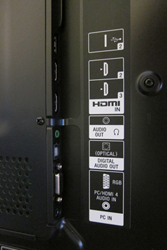
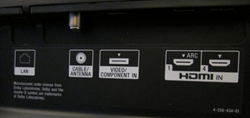
One curious inclusion is an RS232 port on the back of the display that sticks out a bit compared to the ports and mounting holes. I realize having RS232 control is essential for many installers, it seems this could have been done with a breakout cable, or even an RS232 to RJ45 adapter or something similar. As it is, certain mounting brackets that attach a flat panel snugly against the wall will not work with the HX929. Instead of being nearly flush, it will stick out a minimum of around 2 inches. With the panel itself only being 1.5″ deep, the resulting install is not as clean as it should be.

With some of the registration for streaming services being handled online and not from the display, I found the setup to be quite easy. I settled on the standard picture mode in the Cinema preset to start, and then did a full calibration after that. More details on the calibration process are available in the Bench Test section. Once set to a correct level of light output for a living room it was time to see how the HX929 looked. I utilized the integrated tuner for watching TV, and watched movies from a variety of Blu-ray players, including the Oppo BDP-93, Sony BDP-S590 and Sony BDP-S790.
Sony 46HX929 46″ Backlit LED-Array HDTV In Use
Straight out of the box, the HX929 had a reasonably accurate image but one that could be improved upon with calibration. In a nice touch you can have shared settings on the HX929 so it was possible to calibrate a single mode and enable it for every input, including the internal tuner. Backlit LED arrays are wonderful at producing pitch black backgrounds, but often have issues with producing halos around bright objects on a black background, so watching Star Trek with its outer space scenes seemed to be a good way to test this out.
Immediately apparent was that the letterbox bars were completely black. Not the very black that my plasma or a projector usually produces, but outer space black. Not only that, but the presence of stars and spaceships seemed to be unable to produce a halo effect on screen either. If I moved off to the side by around 45 degrees, a halo became apparent as the image shifted, but from a proper viewing position halos were not apparent. Contrast ratios, incredibly accurate colors and skin tones, and an image that is possibly as good as LCD can get today were definitely apparent. The Sony was bright, detailed, and looked fantastic. Star Trek was excellent from beginning to end, looking as good as it ever has.
The Lion King has a rich, vibrant palette of colors as one of the pinnacles of Disney’s hand-drawn animated classics. On the Sony the hues and tones were brilliant, full of rich colors and looking beautiful, not at all washed out or dull. Much like watching a painting, the animation looked wonderful with clear motion and no issues with blur. Cars 2 contains some very dynamic scenes, including the night race in Tokyo. Bright neon lights are set against a black sky and roads that really shows off the HD929’s contrast ratio.
Watching the NBA Finals using the integrated tuner, sports were smooth and crisp, without serious motion blur like previous LCD panels. I would turn on the MotionFlow to Clear sometimes (which uses a combination of black frame insertion and interpolation for reducing blur) and found that most of the time it helped resolution while not introducing much soap-opera effect. It did produce some artifacts and looked worse with 24p film compared to 60i or 60p sports so I only used it with TV where those side effects were negligible.
One issue I noticed when watching golf on CBS, which uses a 1080i60 signal, the interlaced pull-down was seemingly not done correctly. Text and club shafts were blocky instead of smooth, as if pixels were just being repeated instead of deinterlaced correctly. On NBC and their 1080i60 feed these issues were not apparent, so it could be signal related and not the Sony, but there were slight issues noticeable while watching the Tour de France on NBC as well. All 2:2 test clips I had on Blu-ray worked perfectly, so it has to be something with CBS that doesn’t work right, but I only noticed it with golf.
The integrated online services all worked well, with Netflix and Hulu Plus getting significant use in our household. The integrated WiFi manages a strong signal with my wireless router and there were no buffering or other issues to report on. Amazon On Demand looked nice in HD as did VUDU HDX trailers. Even in the streaming modes I was able to select the calibrated presets, which many displays do not allow. Otherwise it can be impossible to calibrate the Smart TV content on some displays, as Netflix and others of course do not provide the test patterns you would need.
I really struggled to find something I didn’t like while using the 46HX929. The software does take a little bit to start up, but this is the case with most SmartTVs now. Off-axis viewing isn’t ideal but that is an issue with all LCDs, and the Sony did relatively well in this regard. The HX929 delivers a fantastic image and looks wonderful. With poor quality sources it has adjustments to help improve them, and with reference quality images you don’t lose any detail at all.
Sony 46HX929 46″ Backlit LED-Array HDTV On The Bench
First thing, the Sony 46HX929 lost chroma resolution with a 4:4:4 YCbCr signal, but not with 4:2:2 or RGB. This is a little strange, but easily avoidable by not using 4:4:4 for a colorspace with the display. Additionally with some very fine black and white test patterns, you can get a bit of green fringing at the edges of lines. I’ve seen this on other sets as well, and it only occurs on certain specific 1-pixel sized test patterns, but I can’t notice it with real content.
Looking at the pre-calibration numbers, most people will be quite happy with how the HX929 looks out of the box. The grayscale had an average dE 1994 error of only 3.3, with an average color temperature of 6732. Gamma was very close to our target as well, though the grayscale is a little low in green as you can see in the graph.
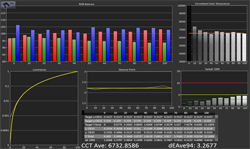
Color results are also very good, with almost all dE values below 3 and a luminance that was almost spot on. When we look at the luminance values from 0 to 100 we also see that it is very consistent across the whole range of intensity levels, so any level of light should be accurate.
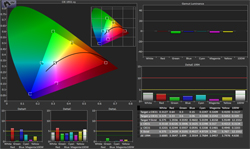

The CMS in the HX929 isn’t as full featured as I expected, but with the 2-point grayscale control I was able to really dial in the grayscale and gamma as seen in the charts. Our average dE 1994 is now below 1 and totally invisible to the naked eye, and that green error in the grayscale is now gone. The CCT of 6534 is almost the ideal 6503, and our gamma is very close to ideal.
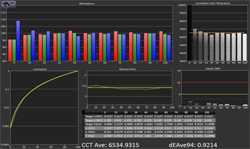
There is no CMS for the colors in the HX929, so I had to do all adjustments using the Color and Hue controls, which meant taking the setting that had the least error, but that I couldn’t dial in colors individually. The white errors are now gone thanks to the grayscale improvements, and every color but red has been improved overall. The Luminance values across the spectrum have also improved, other than red, though they did have more of an issue at 10% than before. This 10% issue can be seen in the grayscale graph where correcting the rest of the grayscale caused a blue shift at 10%, which is probably causing some of this issue. Overall the color performance is still very good, but I do with there was a CMS to really dial in the colors even more.

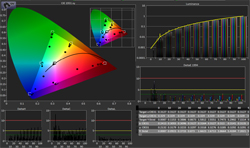
On our colorspace handling tests, I had the YCbCr 4:4:4 issue mentioned earlier that affects chroma, but nothing else. 3:2 and 2:2 cadences were detected correctly with all the test content I could find, leading me to decide that the issue I had with CBS Golf is more content related than display related. Cadence locks were reasonably quick and solid, so it will handle your HDTV content just fine.

This review is also a first attempt to test motion resolution using an AccuPel DVG-5000 pattern generator with the optional test patterns. Most people assume their display can always do the full resolution, but due to delays in pixel response and other factors, you often lose resolution as the speed of motion increases. To measure this, I tested with objects moving at 1, 2, 4 and 8 pixels per frame, and at both 24 and 60 frames per second. I also tested these using different frame interpolation modes available in the HX929 to see how those improve the resolution.
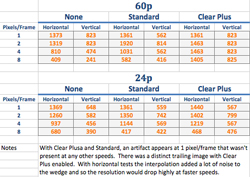
As we can see, the resolution drops way off as speed increases, though the motion interpolation certainly helps with that. All of the interpolation introduces artifacts that are clearly visible with test patterns, and also clearly visible when watching real content that has the interpolation applied to it. As we move to different display technologies or current ones advance, this resolution will increase, but for now it is an additional thing that we can measure in a display. How visible this is to you is a different matter entirely.
Conclusions about the Sony 46HX929 46″ Backlit LED-Array HDTV
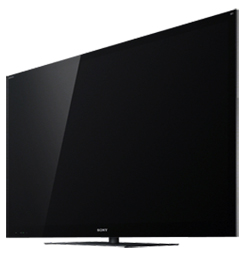
While the race to thin has brought us TVs that sit flush against the wall, it has reached a point of diminishing returns. Once your case is the thickness of an HDMI cable, getting thinner doesn’t make much sense. The 46HX929 is just a couple inches thick and blends into any décor, but the performance it delivers over those panels trying to shave an extra half-inch off their depth is massive. It produces deep, inky blacks including letterbox bars that disappear into the black frame.
Colors are rich and accurate, and details are all present. The side effects I expected to find from backlighting, such as haloing and uneven lighting, were only present if you were far off-angle. For an LCD display, you are going to be hard pressed to find one that can produce an image equal to the Sony HX929 series, much less one that does better. The online content all worked well and kept me from needing to use a Blu-ray player to watch something on Hulu or Netflix. The styling of the HX929 is really quite nice and stands out in a room, though the glass is a bit more reflective than a standard LCD finish.
In the end, the Sony HX929 is a display I can recommend to users that want the best quality LCD on the market. In a pitch-black room, everything but the image itself disappears, but it still has more than enough light output for even the brightest rooms. The motion features do a good job of making sports and other TV content look fantastic, and films were wonderful at their native cadence. I highly recommend looking at the HX929 if you want one of the best displays out there today.


